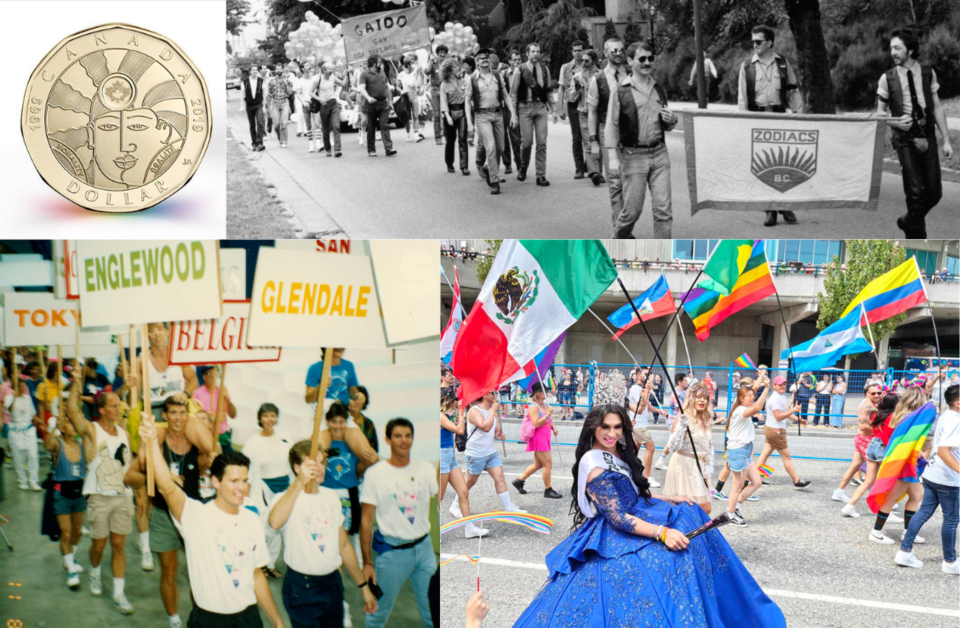Vancouver's LGBTQ+ has long been an important and vibrant part of the city.
Pride parades and community groups have been active here for decades, as Vancouver's socially liberal nature (relatively speaking to other parts fo Canada and the world at the time) allowed for people to organize more easily, despite legal and social institutions actively working against them.
In fact, the Supreme Court of Canada's first case to deal with LGBTQ+ rights had to do with an ad a local group wanted to place in the Vancouver Sun advertising their own community newsletter.
“Subs. TO GAY TIDE. gay lib. Paper. $1.00 for 6 issues. 2146 Yew St. Vancouver,” read the ad.
The Sun's publishers refused to run it, claiming it offended public decency. The supreme court sided with the Sun in the end, noting that the newspaper could refuse what it wanted.
Here are five interesting facts about the LGBTQ+ community facts in Vancouver (if want even more, here are five things you probably didn't know about Pride in Vancouver.)
1. The first unofficial and official Pride Parades in Canada were in Vancouver
Vancouver shares this, to some extent, with Montreal, as both cities had events going on in the 1970s.
In Vancouver, the Gay Alliance Toward Equality (GATE) held an event in 1973 and organized a parade in 1978. In 1981 the first official Pride Parade was held in Vancouver; Montreal held an official parade the same year, having held unofficial events since 1979.
2. A Vancouver artist designed a special loonie celebrating the progress the LGBTQ+ community has made
In 2019 Vancouverite Joe Average, an artist and designer, was tasked with designing a special loonie.
It was commissioned to recognize the 50th anniversary of the decriminalization of homosexuality in Canada; at the time MP Randy Boissonnault, who was the special advisor on LGBTQ+ issues, noted that there is still work to do. Other critics noted there are still barriers to members of the LGBTQ+ community.
Some members of Canada's Christian community started a petition against the launch of the coin, going so far as to say "it is truly far worse than we expected."
This new ‘Equality’ loonie commemorates an important step towards equality for all Canadians. 50 years later, we reflect on the progress we’ve made, and are reminded of the work that still lies ahead.
— Randy Boissonnault 🏳️🌈 (@R_Boissonnault) April 23, 2019
See my full statement here: https://t.co/zdjyd4p1VM pic.twitter.com/dw7Snz2heu
3. The Gay Games were held in Vancouver in 1990
One of the largest sporting events in the world, the Gay Games attracts thousands of athletes from around the world. They started in the USA in 1982 and the first host city outside the US was Vancouver.
An estimated 7,300 athletes participated, with another 1,500 cultural participants (it should be noted the games promote sexual and gender diversity, but there is no requirement to be so). For comparison, the 2010 Olympics saw an estimated 2,600 competitors.
4. The first Pride House was at the Vancouver Olympics
While different groups setting up houses at the Olympic Games is nothing new, the Vancouver 2010 Games did see something new.
Pride House.
The location was run out of the Qmunity center on Davie Street and welcomed athletes, fans, and anyone else who was a member of the LGBTQ+ community or allies; another was set up in Whistler.
Since then there has been Pride House representation at dozens of international sporting events, including the Olympic Games, though not everywhere.
In 2014, due to Russian laws, no house was set up at Sochi, and instead remote events were held, including in Vancouver. In 2018, there was a lack of support for a Pride House at the PyeongChang games, but part of Canada's house was set up as a Pride House.
5. The B.C. Gay and Lesbian Archives are publicly available at the City of Vancouver Archives
The LGBTQ+ community's history isn't always well recorded, but a massive amount of historical material has been saved over the years, and the city's archive is now holding onto thousands of photos, videos, and other documents capturing their stories.
And it's all free and easy to access. Some of it is online and easy to peruse. Other pieces are on site, which can be visited by the public.



